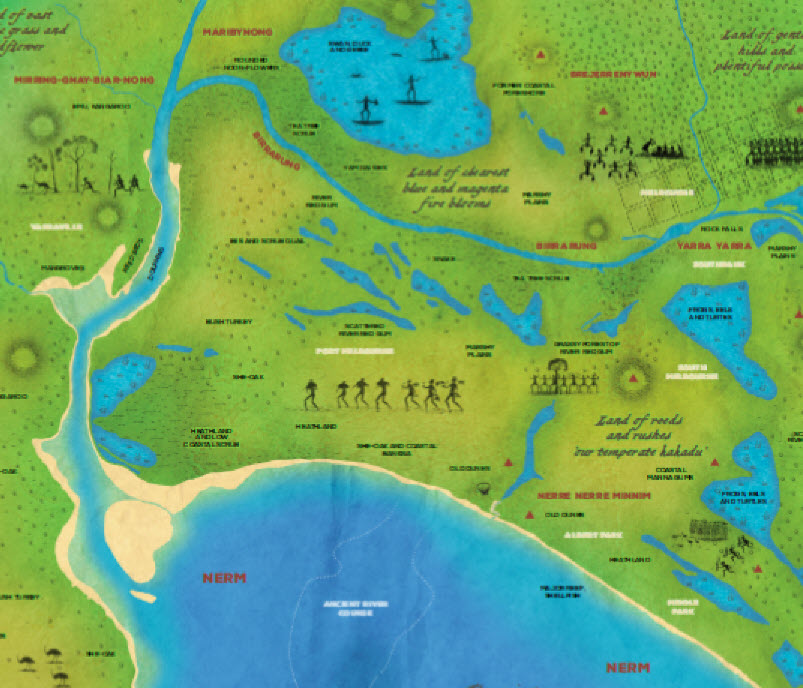As many people know I have an interest in the history and development of project, and construction, management: https://mosaicprojects.com.au/PMKI-ZSY.php This includes an interest in the way the built environment is created, adapted, and evolves.
We have lived and worked in modern-day South Melbourne for the last 20+ years, so I thought it was time to focus on history closer to home…… using images of maps I’ve found over the years that show the development of our suburb during its relatively short existence.
The Melbourne area looked very different before settlement:

The city of Melbourne* was founded on the North bank of the Yarra River in 1835 generally where the street grid is marked on the map above. Within 20 years, the road pattern for Emerald Hill had been established (now South Melbourne) and the rail lines to Port Melbourne and St. Kilda built. For more on the construction of the railways see: The First Steam Powered Railway in Australia.
This map shows the area in 1855 but appears to be showing lots, rather then buildings:
A more details 1864 map by H.L. Cox R.N. shows the actual buildings as at that date:

By 1880 tram lines were under construction connecting through to the city:

By 1890 most of the features recognizable today were in place (Albert Park is the location of the Melbourne F1 race each year):

Thirty years later in 1921 the tram network was established. Most of the tram lines are still operational and the railways have been converted to light rail and join the tram network in the city:

Fast forward to 2022 and apart from changes in the municipal boundaries, not much has changed:

And South Melbourne is still a great place to live and work.
* The name Melbourne was chosen by NSW Governor Sir Richard Bourke on his visit in March 1837 overriding a number of other choices. Melbourne was named after the then British Prime Minister William Lamb, 2nd Viscount Melbourne, who’s family seat was in the village of Melbourne in Derbyshire in the English Midlands. The Derbyshire ‘Melbourne’ is also the birthplace of Thomas Cook, founder of the world-wide travel agency. Viscount Melbourne became a mentor and personal friend of Queen Victoria.



Pingback: What a difference a few tons of gold make. | Mosaicproject's Blog
Pingback: The Port of Melbourne is not what it seems | Mosaicproject's Blog